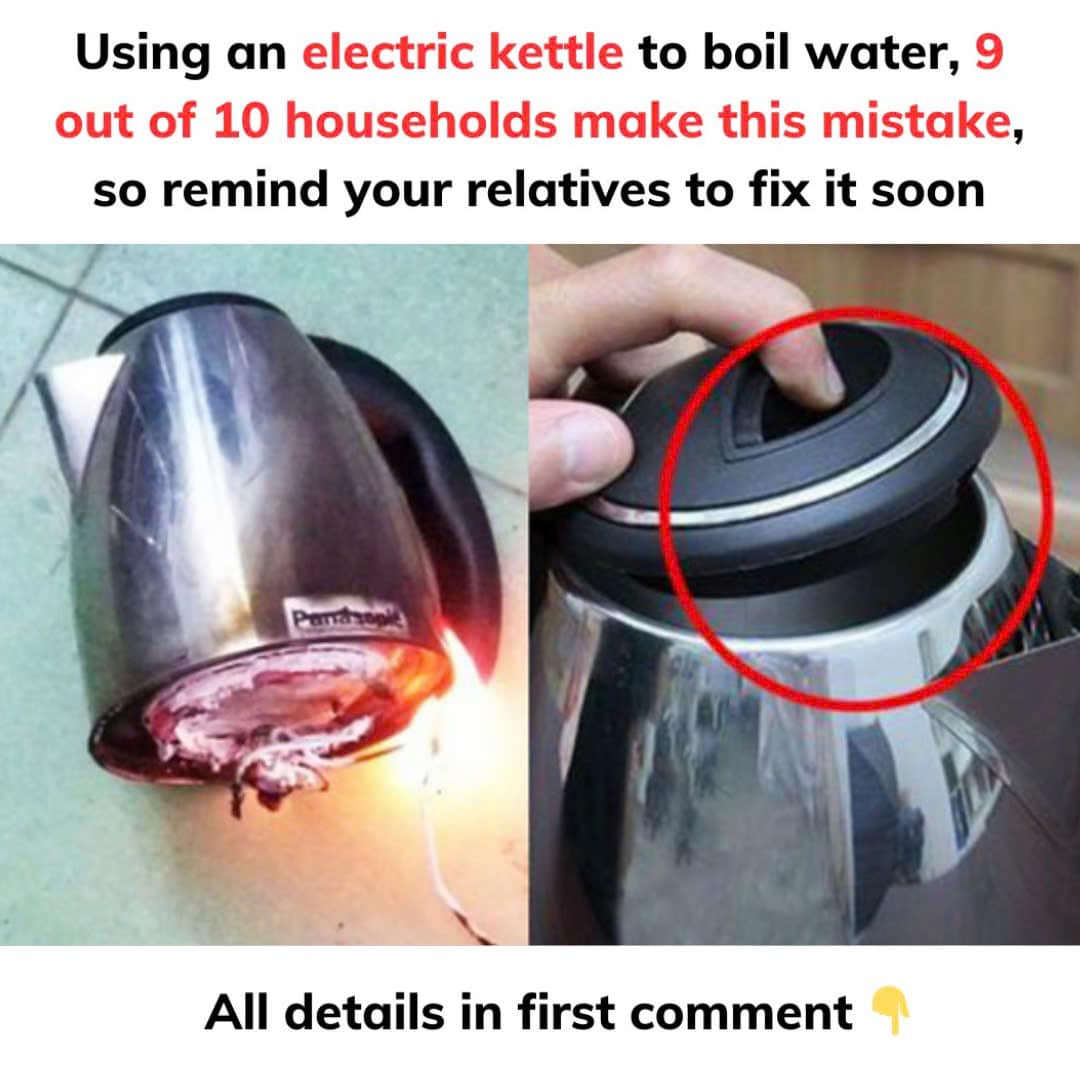Using an electric kettle to boil water is one of the most common and convenient tasks in modern households. With just a simple press of a button, water is heated within minutes, making it perfect for tea, coffee, or cooking. However, despite its simplicity, many people unknowingly make mistakes that not only reduce the lifespan of their electric kettle but also pose potential health risks. These mistakes, often repeated in 9 out of 10 households, are surprisingly easy to avoid once you’re aware of them.
The first mistake is assuming that any type of electric kettle will do the job. Many people believe that all kettles are the same as long as they can boil water. However, the material of the kettle plays a critical role in both safety and water quality. When buying an electric kettle, always opt for one made from high-quality stainless steel, specifically 304 stainless steel. This material is corrosion-resistant, can withstand high temperatures, and ensures that no harmful chemicals leach into the water. Cheaper materials may corrode over time, contaminating the water and posing health risks. Investing in a well-made stainless steel kettle isn’t just about durability—it’s about ensuring every cup of boiled water is safe to consume.

The second common mistake is overfilling the electric kettle. Many people fill the kettle to its maximum capacity—or even above it—believing it’s more efficient. However, this practice can cause water to overflow during boiling. Spilled water can seep into the base of the kettle, leading to short circuits or even fire hazards. Most kettles have a clearly marked maximum water level inside. Ignoring this guide can damage the appliance and create safety risks. To avoid problems, never fill water above the recommended level.
The third mistake involves turning on the kettle before adding water. In the rush to boil water, some people turn on the kettle while fetching water from another container. Running an empty electric kettle causes a condition called dry boiling, where the heating element overheats without water to absorb the heat. Even if it happens for a short time, it can damage the kettle’s heating coil and other internal components. Over time, repeated dry boiling may cause electrical shorts or even fires. To prevent this, always ensure there’s water in the kettle before turning it on. Additionally, always check the base to ensure it’s completely dry before placing the kettle back on it. Any moisture on the base could lead to electrical issues.
Another frequently overlooked mistake is pouring out all the water immediately after boiling. Many people believe that completely emptying the kettle helps keep it clean and prevents stale water buildup. However, pouring out every last drop of water while the kettle base is still hot can damage the thermal relay—a component responsible for controlling the kettle’s heating function. Over time, this can lead to malfunction or complete breakdown of the appliance. Instead, it’s better to leave a small amount of water in the kettle after pouring. Before the next use, simply pour out the remaining water and rinse the kettle briefly to ensure freshness.
The final mistake is neglecting to clean the kettle regularly. Over time, mineral deposits and residue build up inside the kettle, especially in areas with hard water. These deposits appear as yellowish or whitish scales on the kettle’s interior surface. Not only do these scales reduce the efficiency of the kettle, but they can also affect water quality and pose health risks if ingested over time. To clean the kettle, a simple yet effective method involves white vinegar. Mix equal parts white vinegar and water, pour the solution into the kettle, and boil it. After boiling, let the mixture sit for about ten minutes before pouring it out. The vinegar’s acidity dissolves the alkaline mineral deposits, leaving the kettle clean. Afterward, rinse thoroughly with clean water and wipe the interior dry with a soft cloth. Alternatively, citric acid or baking soda can also be used as effective cleaning agents.
In conclusion, while using an electric kettle seems simple, small mistakes in usage and maintenance can have long-term consequences. Choosing a high-quality stainless steel kettle, avoiding overfilling, ensuring water is added before turning it on, leaving a small amount of water after boiling, and cleaning regularly are all essential practices for keeping your kettle in optimal condition. These steps not only extend the appliance’s lifespan but also ensure that the water you drink is clean and safe. By avoiding these five common mistakes, you can maximize the efficiency of your electric kettle while protecting both your health and your investment





